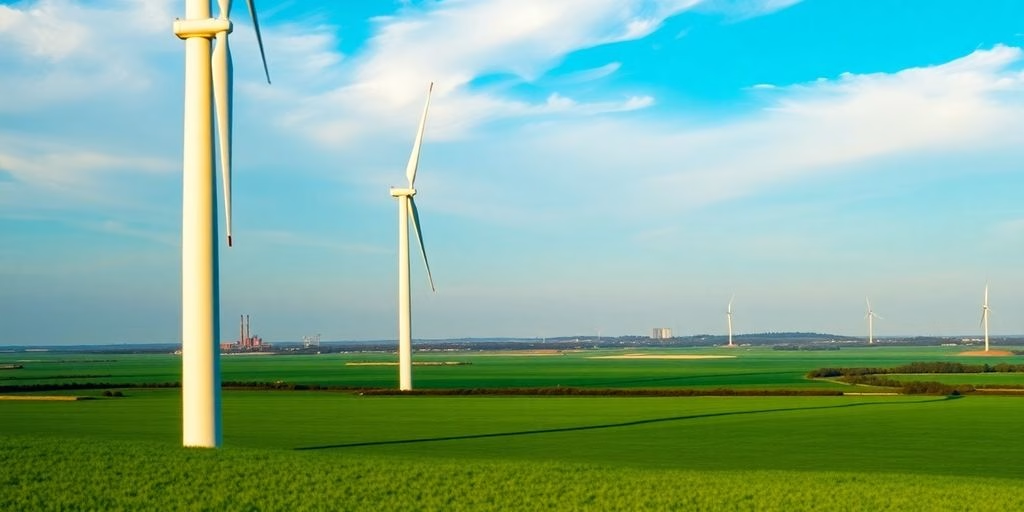Germany is making significant strides in its energy transition, with recent data revealing a substantial decrease in climate-damaging emissions. Simultaneously, the nation is implementing measures to bolster its domestic wind energy sector and ensure data security amidst growing international competition.
Emissions Decline Amidst Energy Transition Efforts
Final data for 2023 indicates a ten percent reduction in Germany’s climate-damaging emissions. The energy sector saw the most significant drop, with greenhouse gas emissions falling by approximately 21.1 percent compared to the previous year. This decline is attributed to reduced reliance on fossil fuels for electricity and heat generation, driven by the expansion of renewable energies and a shift from electricity export surplus to import surplus, coupled with decreased energy demand. The industrial sector also contributed to the reduction, with emissions falling by seven percent, largely due to decreased use of fossil fuels and a negative economic development leading to lower production. The building sector saw a 6.9 percent decrease in emissions, aided by mild weather and increased use of heat pumps. However, the transport sector experienced a modest 1.7 percent reduction, and agriculture saw a slight decrease of 0.9 percent. Worryingly, forests have transitioned from being a carbon sink to a source of emissions, highlighting the need for urgent policy changes in this area.
Strengthening the Domestic Wind Energy Sector
In response to challenges in the European and German wind energy supply chain, Germany’s Ministry for Economy and Energy has introduced a five-point Action Plan. This plan aims to address unfair competition from international manufacturers, particularly from China, and mitigate cybersecurity risks associated with non-European wind turbines. The EU has set ambitious targets for wind energy capacity expansion, aiming for 425 GW by 2030 and 1,300 GW by 2050. Germany’s action plan seeks to ensure that this expansion benefits European industry.
Key takeaways from the action plan include:
- Ensuring a Level Playing Field: Germany acknowledges unfair competition and is advocating for the EU to utilize trade defense measures, such as anti-subsidy and anti-dumping regulations, against unfairly subsidized international competitors.
- Enhancing Data Security: Recognizing wind turbines as critical energy infrastructure, Germany is committed to implementing robust cyber and data security laws to prevent foreign influence over their operation.
- Reducing Dependency on Imported Components: The plan includes a roadmap to reduce Europe’s reliance on imported permanent magnets, a crucial component in wind turbines.
- Boosting Manufacturing Capacity: Germany intends to support the expansion of Europe’s wind energy manufacturing capacity through financial guarantees and other support programs.
- Scrutinizing Public Financing: Closer examination of wind energy projects receiving public funding is proposed to ensure they do not undermine European interests or distort fair competition.
Germany’s Climate Targets and Energy Mix
Germany has set ambitious climate targets, aiming for carbon neutrality by 2045. The energy industry remains the largest emitter, accounting for 30.5 percent of total greenhouse gas emissions in 2023, though emissions from this sector have decreased by approximately 57 percent since 1990. Heavy industry is the second-largest emitter, with a 44 percent reduction in emissions since 1990. While progress has been made across most sectors, the building and transport sectors require accelerated measures to meet climate goals. Germany’s energy mix continues to see a growing share of renewables, contributing to the overall reduction in emissions.
Sources
- Germany acts to ensure level playing field and data security in wind energy, WindEurope.
- Final data for 2023: climate-damaging emissions fell by ten per cent, Umweltbundesamt.
- Germany’s energy consumption and power mix in charts, Clean Energy Wire.
- Germany’s greenhouse gas emissions and energy transition targets, Clean Energy Wire.

